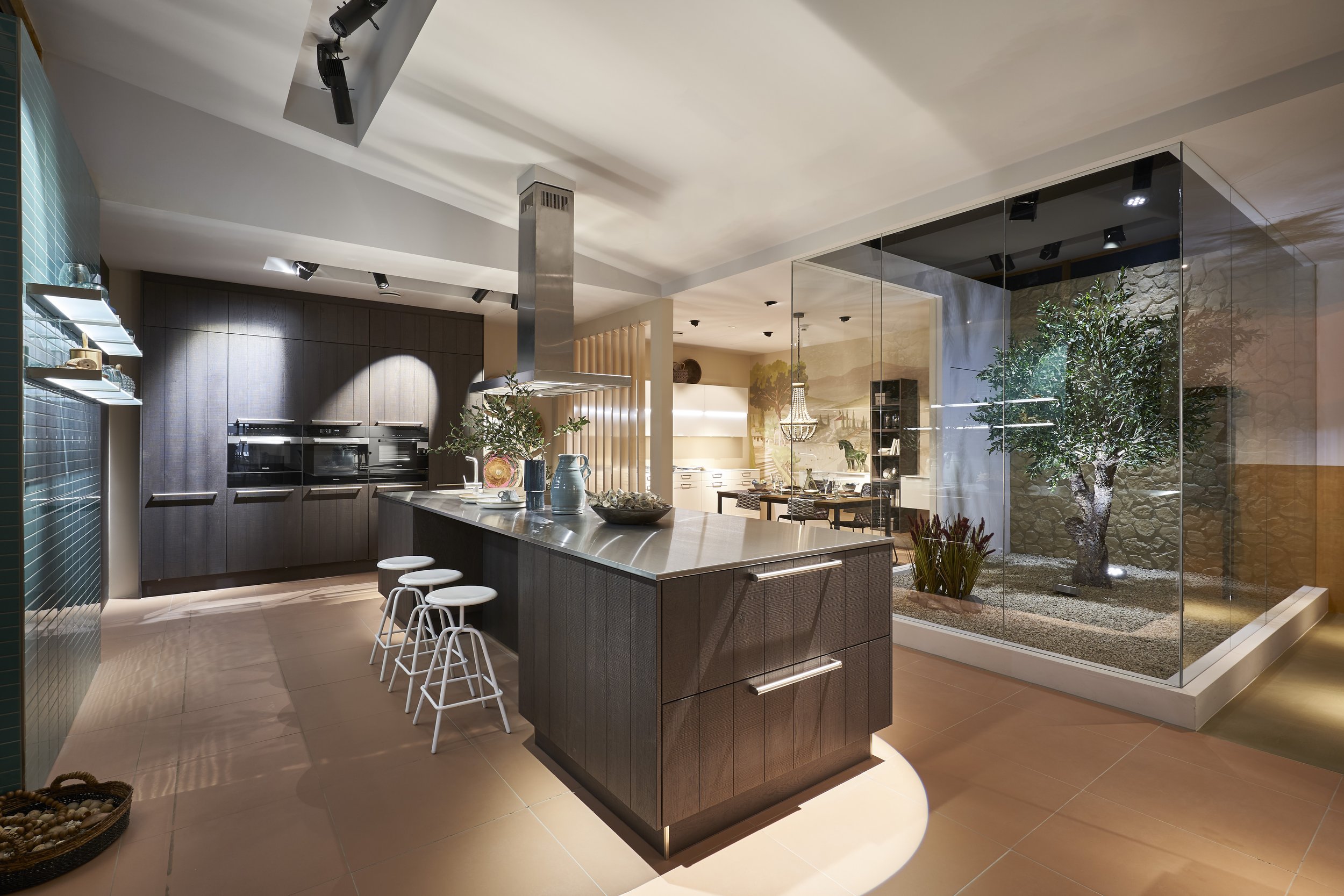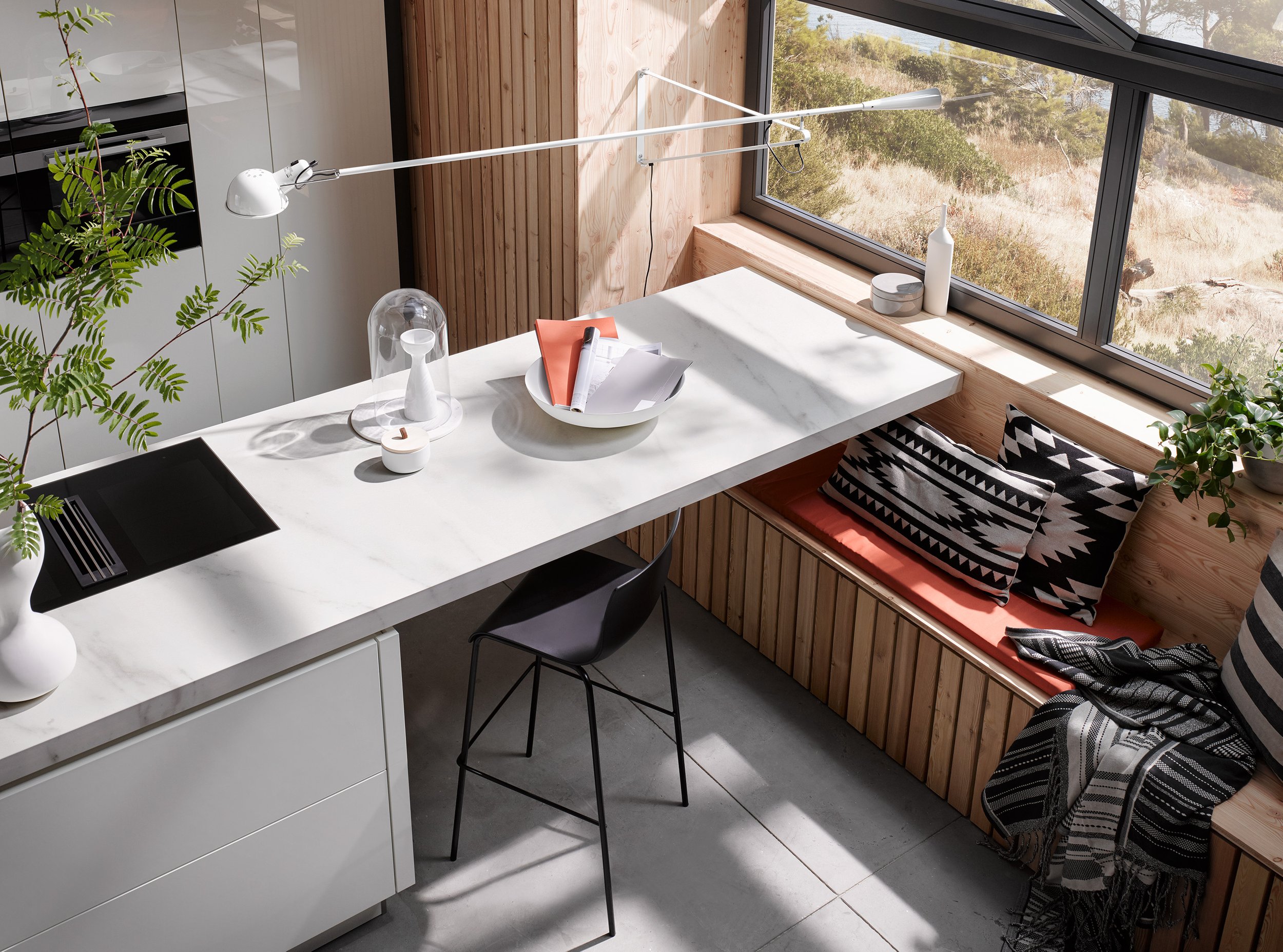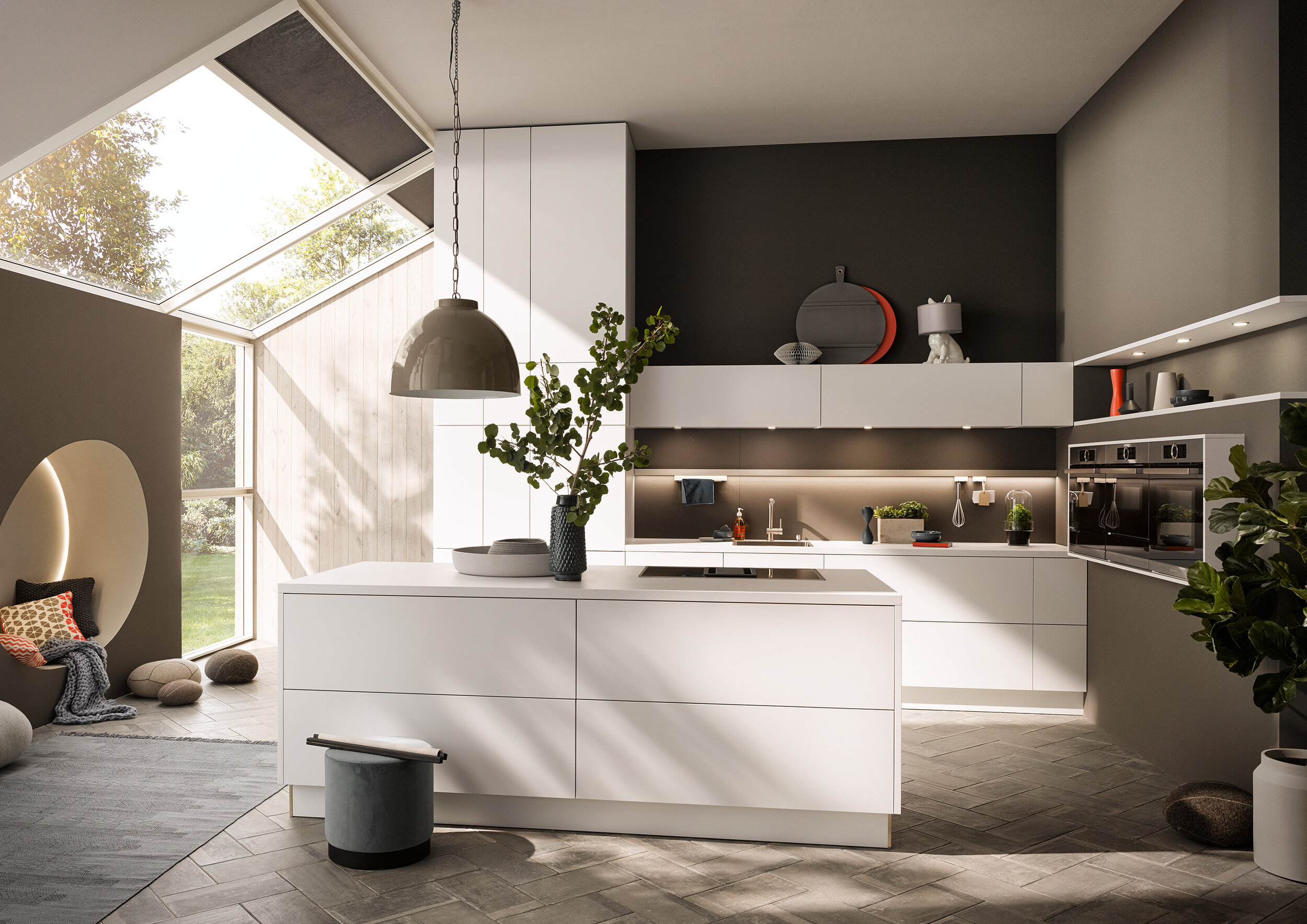
Perfect Kitchen Dimensions for Australians
Proper kitchen sizing is fundamental to creating functional, comfortable cooking spaces that meet Australian building standards and ergonomic requirements. Understanding standard dimensions ensures your kitchen renovation or new build delivers optimal workflow, storage capacity, and compliance with local regulations. This comprehensive guide covers essential kitchen dimension requirements for Australian homes.
Standard Kitchen Size in Australia
Ceiling Heights and Room Proportions
Typical kitchen ceiling heights range from 2440mm to 2740mm in new builds, providing adequate clearance for tall cabinets and ventilation systems. The standard kitchen room height measures approximately 2223mm when including base cabinets, benchtop, and wall cabinets, creating a balanced proportion that feels neither cramped nor overly spacious.
Building Code Compliance
Residential kitchens must meet minimum building code requirements, with specialised allowances for fixtures, ventilation, and emergency egress. These regulations ensure adequate clearances around appliances, proper ventilation for cooking equipment, and safe passage through the space during daily use and emergencies.
Understanding kitchen size standards ensures compliance with Australian building codes whilst optimising ergonomics for users. Proper dimensions reduce physical strain during food preparation and cooking, creating more comfortable and efficient working environments.
Average Kitchen Size and Layouts
Standard Layout Dimensions
Australian kitchens typically range from compact galley designs in apartments to spacious open-plan configurations in family homes. Common kitchen layouts include galley kitchens measuring 1800mm to 2400mm wide, L-shaped configurations requiring minimum 2400mm x 2400mm floor space, and U-shaped designs needing 3000mm x 3000mm minimum.
Kitchen Island Sizing Requirements
Kitchen island sizing becomes critical in larger spaces, with minimum clearances of 1000mm to 1200mm around all sides for comfortable movement. The kitchen size for island installations must accommodate both the island dimensions and adequate circulation space. Standard kitchen island dimensions range from 1800mm x 900mm for compact designs to 2400mm x 1200mm for larger configurations.
Kitchen island measurements must consider both functional requirements and traffic flow, with the kitchen size with island needing at least 4000mm x 3000mm floor area for optimal functionality. Sizing a kitchen island properly ensures enhanced workflow rather than circulation impediments.
Kitchen Size Design Tips for Different Homes
Small Home Solutions
Small homes benefit significantly from compact bench configurations and strategic cabinet sizing that maximises vertical storage opportunities. Utilising ceiling height effectively compensates for limited floor space, with tall cabinets extending to 2400mm or higher providing essential storage without consuming additional footprint.
Large Home Advantages
Larger homes accommodate generous islands and multiple work zones with ample clearance for comfortable movement between areas. Kitchen island size in these spaces can reach 2400mm x 1200mm or larger, incorporating seating, additional storage, and appliance housing whilst maintaining proper circulation.
Ergonomic Considerations
Tailoring kitchen dimension decisions based on household cooking habits, entertaining frequency, and family size ensures the space serves its intended purpose effectively. Average kitchen benchtop height adjustments between 850mm and 950mm accommodate different user requirements and reduce physical strain during daily tasks.
Kitchen Bench Size and Standard Countertop Dimensions
Height Standards
Standard kitchen benchtop height measures approximately 900mm, though this dimension remains adjustable based on user comfort requirements. Taller individuals often benefit from increased height, whilst shorter users find lower configurations more comfortable for extended food preparation periods.
Depth and Thickness Specifications
Kitchen bench size depth commonly measures 600mm but varies to accommodate appliance requirements, particularly refrigerator depth and integrated dishwasher dimensions. Deeper benchtops reaching 650mm or 700mm provide additional workspace and better appliance integration.
Typical benchtop thickness ranges from 20mm for laminate surfaces to 40mm for natural stone materials, with engineered stone commonly measuring 20mm to 30mm. Kickboards beneath base cabinets maintain standard 150mm height, providing necessary toe clearance and facilitating easier cleaning.
Kitchen Sink Size and Variations
Single Bowl Configurations
Single bowl kitchen sink size typically measures 550mm length and 500mm width, providing adequate capacity for daily washing needs without overwhelming smaller kitchen configurations. These dimensions suit compact kitchens whilst offering sufficient functionality for basic food preparation and cleaning tasks.
Double Bowl Options
Double bowl configurations require approximately 800mm length and 480mm width plus additional space for draining areas and tap installation. The dual bowl design accommodates simultaneous washing and rinsing activities, particularly beneficial for larger households or frequent cooking.
Average sink depth measures around 200mm according to Australian kitchen standards, balancing capacity with ergonomic considerations. Kitchen sink size directly impacts surrounding cabinet dimensions and available benchtop workspace, requiring careful coordination during planning phases.
Kitchen Cabinet Sizes
Base Cabinet Specifications
Base cabinets typically measure 720mm high excluding benchtop thickness, with standard 560mm depth providing adequate storage whilst maintaining proportional scale. These kitchen cabinet dimensions create consistent sight lines and allow for modular configurations accommodating various kitchen layouts.
Wall Cabinet Standards
Wall cabinets maintain 720mm height with widths increasing in 50mm increments from 300mm up to 1200mm maximum. Maximum door width for base cupboards reaches approximately 600mm before structural concerns arise regarding sagging and hinge stress.
Kitchen cabinet sizing follows standardised measurements allowing for modular, flexible configurations tailored to specific kitchen requirements. This standardisation simplifies replacement and modification whilst ensuring compatibility across different manufacturers.
Kitchen Drawer Sizes and Functional Storage Planning
Standard Width Ranges
Standard kitchen drawer sizes range between 300mm and 900mm width, providing flexibility for various storage requirements from cutlery organisation to pot storage. This range accommodates different kitchen layouts whilst maintaining structural integrity and smooth operation.
Functional Depth Variations
Drawer depth and height vary significantly based on intended use, with cutlery drawers requiring minimal depth whilst pot and pan storage demands deeper configurations. Soft-close mechanisms and full-extension slides enhance drawer functionality regardless of size, improving storage access and reducing wear.
Strategic drawer sizing maximises usability and organisation within kitchen layouts, with careful consideration of contents ensuring optimal functionality and improved daily workflow efficiency.
Kitchen Unit Sizes: Base, Wall, and Tall Cabinets
Standard Unit Dimensions
Base kitchen unit sizes maintain 720mm height plus benchtop thickness, creating consistent work surface height across different kitchen configurations. Wall units typically measure 720mm height, though variations accommodate specific storage needs and ceiling clearances.
Tall Unit Specifications
Tall units provide pantry or appliance housing extending to ceiling height, often reaching 2100mm or higher depending on ceiling configuration. These units maximise vertical storage capacity without consuming additional floor space, particularly valuable in smaller kitchens.
Uniform unit depth improves visual consistency throughout the kitchen design, with standard base units measuring 560mm deep whilst wall units typically reach 300mm depth.
Kitchen Counter Size
Height and Depth Standards
Standard kitchen counter height maintains 900mm measurement, though adjustment capabilities accommodate individual ergonomic requirements. Counter depth varies from the standard 600mm up to 650mm or more, accommodating additional workspace requirements or specific appliance dimensions.
Length Considerations
Counter length depends entirely on kitchen size and layout requirements, balancing preparation areas with appliance installation and storage access. Coordinating kitchen counter size with cabinetry ensures both aesthetic harmony and functional efficiency throughout the space.
Kitchen Table Size and Dining Dimensions
Table Height Standards
Standard dining table dimensions range from 750mm to 900mm height, ensuring comfortable seating coordination with standard chair heights. This range accommodates different chair styles whilst maintaining ergonomic comfort during dining.
Length and Width Requirements
Table dining dimensions vary significantly based on seating requirements, with typical family tables measuring 1500mm to 1800mm dining table length accommodating four to six people comfortably. Coordination between kitchen dimensions and dining table size ensures smooth traffic flow and functional dining areas.
Dining table size and kitchen workflow must balance effectively, with adequate clearances preventing interference during food preparation and service. Proper planning ensures dining areas enhance rather than hinder kitchen functionality and daily household operations.
Kitchen sizing encompasses numerous interconnected elements requiring careful consideration and professional planning. Understanding these standard dimensions provides the foundation for creating functional, comfortable, and compliant kitchen spaces that serve Australian households effectively for years to come.







